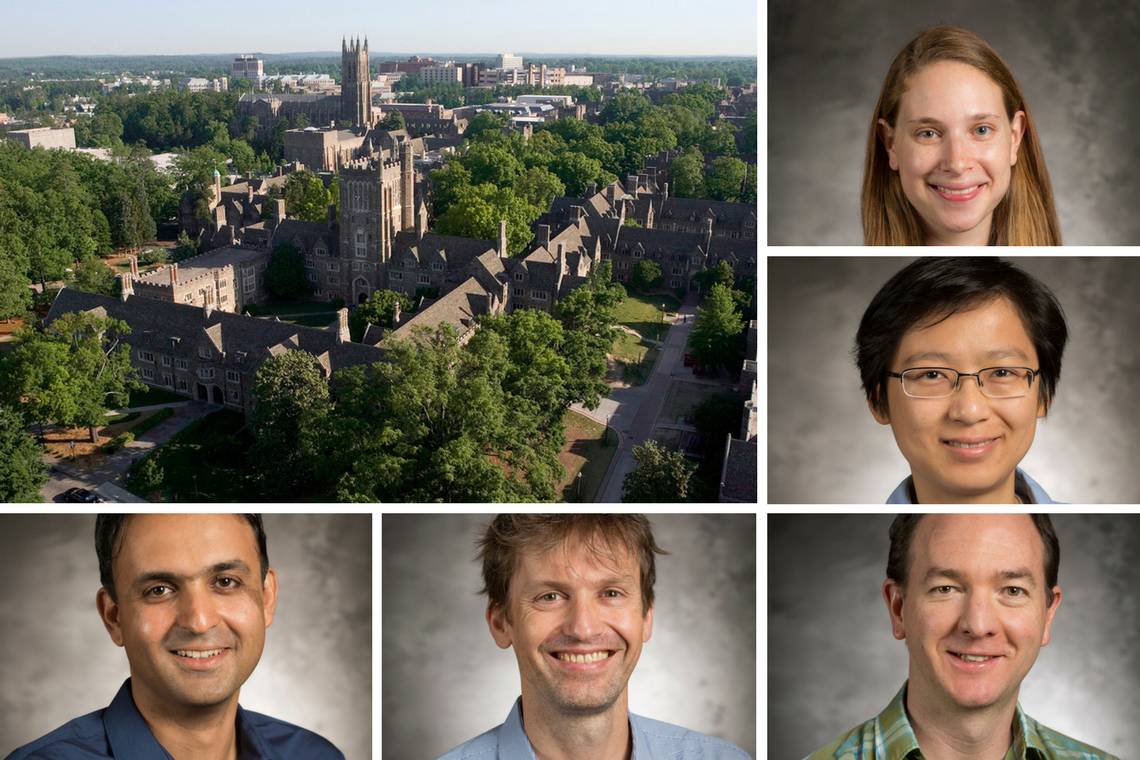
Provost Sally Kornbluth this week launched a new initiative advancing the sciences at Duke. Part of the strategic plan Together Duke, the Quantitative Initiative includes support for greater collaboration in the sciences and the hiring of new faculty members whose research bridges across key scientific fields.
Below, Kornbluth talks more about the effort, the research vision driving the initiative and the new hires.
What is the Quantitative Initiative?
The Quantitative Initiative (QI) is a strategy for deepening the faculty bench in quantitative sciences across the university, and with an eye for seeding cross-school research collaboration. It is also part of Duke’s new strategic plan: Together Duke: Advancing Excellence Through Community, and our commitment to strengthening the natural sciences at Duke.
Our goal in this first phase of the initiative was to strategically hire quantitative science faculty whose research portfolios have ties to biomedicine. The idea is that these individuals will augment our existing outstanding faculty core in this area and will catalyze greater interaction between the schools of Medicine and Nursing and the other campus schools. We’re building on Duke’s quantitative research strength in math, statistics, economics, electrical & computer engineering, computer science, environmental science, biostatistics, physics, bioinformatics, in the Duke Information Initiative (iiD) and the Global Health Institute.
In this first phase, we were particularly interested in investing in this intellectual community in ways that would increase the interactions between the Medical School, the natural science departments in Trinity College of Arts & Sciences and the Pratt School of Engineering.
What’s been exciting is how quickly we were able to identify candidates of the high caliber we were seeking. The program has far exceeded my hopes. We made an initial investment in faculty hiring and startups and I envisioned taking 3-5 years to fill these positions. Instead, we’ve hired 9 truly outstanding faculty members in only 18 months.
How are QI hires chosen?
 We shifted the paradigm for hiring with the QI, and I think it has been tremendously successful. First, we assembled an advisory committee of faculty with quantitative expertise from across the university to discuss, in principle, what we needed to further elevate the quantitative sciences at Duke. But, by and large, the actual candidates did not come from this group.
We shifted the paradigm for hiring with the QI, and I think it has been tremendously successful. First, we assembled an advisory committee of faculty with quantitative expertise from across the university to discuss, in principle, what we needed to further elevate the quantitative sciences at Duke. But, by and large, the actual candidates did not come from this group.
Rather, departments seeking quantitative faculty nominated their best candidates whose research portfolios augmented departmental research strengths and needs, AND, who created complimentary opportunity more broadly across the university. The advisory committee then served as stewards of our “big picture” initiative vision, and helped to evaluate and select candidates nominated by departments. Those selected received central financial support through the QI.
Moving forward, I hope that our first set of initiative hires will take an active part in the next phase of our hiring.
I also think it’s important to point out that we’re embedding faculty with needed expertise into our existing departments as a way to broadly fuel creativity in quantitative research. We’re not creating a new administrative unit.
What will QI 2.0 look like?
We’re just starting to talk about the next phase of the QI investment strategy. I am already envisioning that our focus will shift more towards quantitative chemical, physical, fundamental biological research problems. In this phase, we will look to more deeply connect Trinity’s natural & physical science departments with those in the Pratt School of Engineering, the Nicholas School for the Environment, and School of Medicine, complementing efforts in other areas to enhance both wet and dry lab research in the sciences.